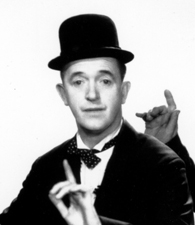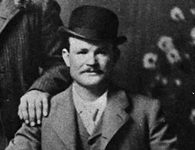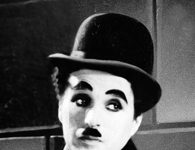Known for his antics alongside fellow funnyman Oliver Hardy, comedian Stan Laurel had a unique identity and story all his own.
Stan Laurel’s Early Days
Stan Laurel was born Arthur Stanley Jefferson in Ulverston, a small town in Cumbria, England, on June 16, 1890. The second of five children, Laurel was born to theater professionals Arthur Jefferson and Margaret Metcalfe.
He helped out at his father’s theater, the Metropole, before debuting on stage at age 16 at the Panopticon in Glasgow. (The 150-year-old venue also hosted legendary actor Cary Grant’s debut as a dancing stilt walker.)
He went to the United States for the first time in 1910 as Charlie Chaplin’s understudy in Fred Karno’s musical comedy troupe. He changed his name, writes the BBC, because “Jefferson” had 13 letters in it, an unlucky number. It is said that Laurel’s vaudeville partner and common-law wife Mae Daulberg found a laurel wreath, inspiring the new name.
Sources in this Story
- Scotland.org: Lights, camera and plenty of action
- The BBC: Stan Laurel
- Letters From Stan: The Stan Laurel Correspondence Archive Project: Stan Laurel History
- Encyclopedia Britannica: Stan Laurel
Laurel’s Film Career
Chaplin was the star of Karno’s troupe, and once he left, the troupe broke up. Laurel played vaudeville houses and acted in a few movies, including 1917’s “Nuts in May.” Laurel had had his heart set on acting and directing; however, an on-set accident put him onscreen in 1918’s “A Lucky Dog,” and paired him with Oliver “Babe” Hardy.
Laurel and Hardy began working together for comedy producer Hal Roach in 1926. Unlike most silent film stars, they made a successful transition to “talkies”; the duo’s first film with sound is 1929’s “Unaccustomed As We Are.”
The pair displayed an irresistible chemistry to viewers in more than 50 films in the 1930s and ’40s, including such as classics as “Sons of the Desert” (1933) and “Babes in Toyland” (1934). Their three-reel film “The Music Box” won an Oscar for Best Short Subject in 1932, but Laurel, who wrote and directed most of their films, wanted higher quality productions. Laurel and Hardy would eventually leave Roach, seeking more artistic freedom, but Fox and MGM were even less accommodating, and the films they made for those studios flopped.
Laurel and Hardy continued to make films and appear live in English music halls until the early 1950s, when both men experienced ill health. Oliver Hardy died in 1957, and Laurel never performed again. Laurel received a special Oscar in 1961 “for his creative pioneering in the field of comedy.”
The Man and His Work
- “The Laurel and Hardy Collection (The Devil’s Brother/Bonnie Scotland)”
- “March of the Wooden Soldiers”
- “The Stan Laurel Collection (Slapstick Symposium)”
- “The Stan Laurel Collection 2 (Slapstick Symposium)”
- “Stan and Ollie: The Roots of Comedy: The Double Life of Laurel and Hardy” by Simon Louvish
The Rest of the Story
Laurel’s personal life was a bit tumultuous. After separating from Mae Daulberg in 1925, he married four women (one of them twice); he married his fourth wife, Ida Kitsaeva, in 1946, and remained with her until his death from a heart attack on February 23, 1965.
Admirers of the Laurel and Hardy comedy team can share their appreciation at the Laurel and Hardy Museum in Laurel’s hometown of Ulverston, or by joining Sons of the Desert, the International Laurel & Hardy Society.
This article was originally written by Kate Davey; it was updated May 22, 2017.











